Which Carriers Use Sim Cards
Just nearly every cellular telephone in being today makes use of a SIM card. "SIM" is short for Subscriber Identity Module. Without information technology, y'all can't make or receive phone calls. You also tin't use any internet data over a cellular connexion.
You probably already knew this, only why is your phone so useless without this minor piece of metallic and plastic? Just what is a SIM carte du jour really used for?
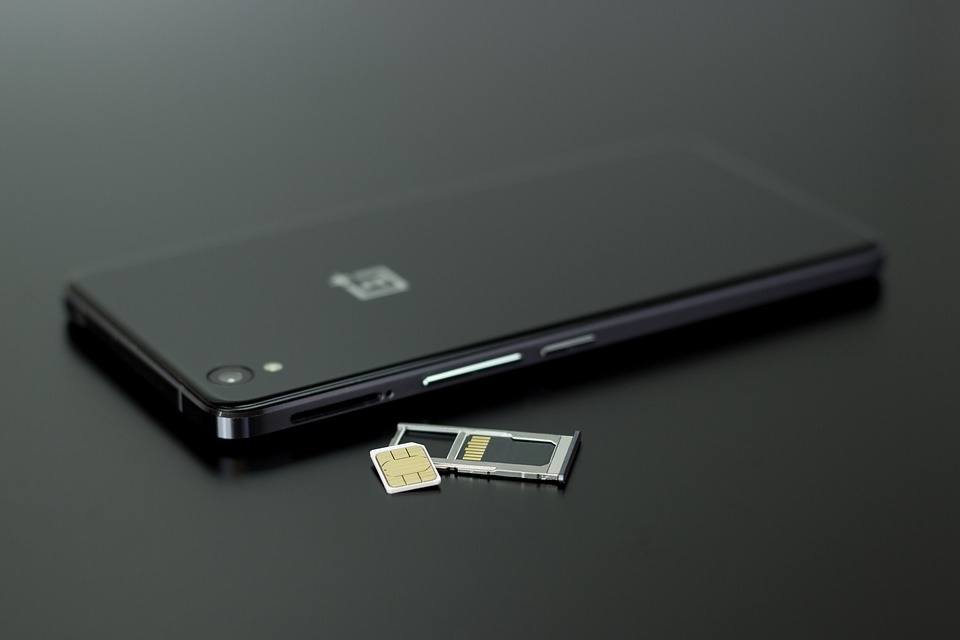
What a SIM Menu Looks Similar
A SIM Card is pretty piece of cake to identify. Information technology's a plastic card with a distinct set of metal contacts. Within the SIM card yous'll find an integrated circuit, which communicates with the phone through the aforementioned metal contacts.
SIM cards come in a diverseness of shapes and sizes. In fact, there are four sizes in total. The largest is known as "full-size" and is effectively obsolete. Measuring 3.37 in past 2.125 in, full-size SIM cards were basically the size of smart access cards.
The reason for this is quite interesting. At the outset of mobile phone applied science, multiple people would share a unmarried telephone. The idea was that you would insert your enormous SIM carte du jour into the phone when you wanted to utilise information technology. Since the card would spend more than fourth dimension in your wallet than in a phone, the big plastic body made perfect sense.
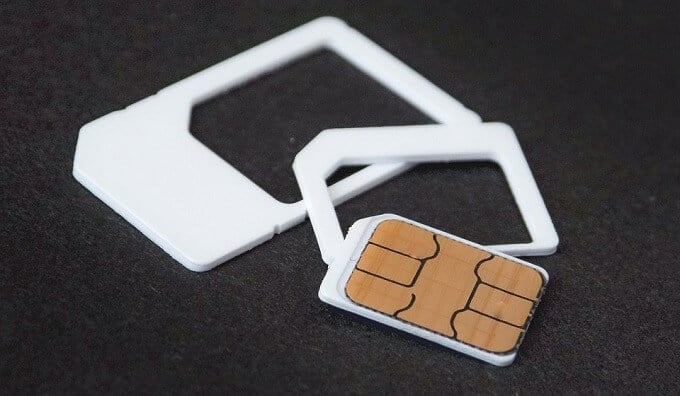
These days most SIM cards you'll buy have all three of the common sizes, with pieces of the plastic body breaking abroad until you lot attain the size you desire. The Mini-SIM size is pretty uncommon these days and is generally used in legacy devices or depression-cost devices based on older designs.
The Micro-SIM size is very popular and most mainstream phones use this. The Nano-SIM size eliminates virtually all plastic body around the SIM contacts and is substantially the standard for flagship and mid-high-end smartphones, where internal space is at an extreme premium. SIM cards are physically keyed to brand it impossible to insert them the incorrect mode around.
Here'southward a tip: don't throw away the Mini- and Micro-SIM frames when yous get a new SIM menu. If you e'er need to move the SIM to another telephone you may still demand them!
What Does a SIM Carte du jour Practice?
The cellular network owned past your service provider is just that – a network. They need to control who has access to that network both for security reasons and to brand the whole thing work!
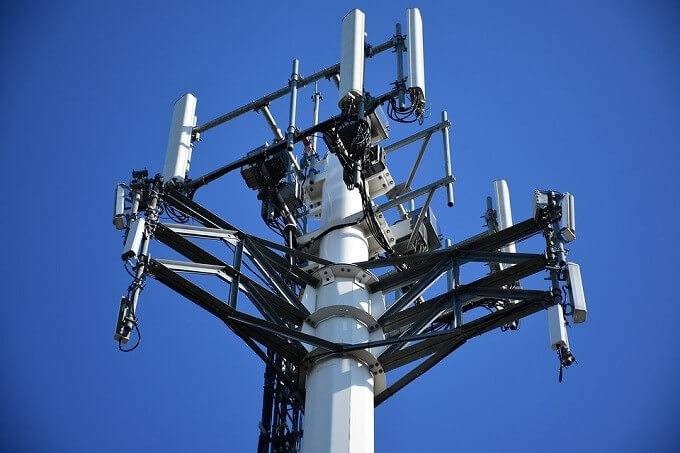
So what is a SIM card? Your SIM bill of fare is an access card. Information technology contains your credentials. So in that sense it'south like a card that stores your username and password. You "log in" to the cellular network with the SIM carte du jour. Your phone number is your unique network identity.
No matter where y'all go, equally long as you are within range of a cellular tower belonging to your service provider, you lot can exist reached and attain others.
What's Stored On a SIM?
The SIM card has information on information technology that the network needs to authenticate your business relationship. One of these is the ICCID or Integrated Circuit Carte Identifier. This is a number that's unique to that specific physical SIM card.

The adjacent important bit of data on the SIM is known as the authentication key. This is a cryptographic key used to sign information sent to the cellular network. They key is run through a cryptographic function and so compared to some other calculation done with a copy of the key stored in the carrier'southward database. If they match, you're let onto the network.
The SIM also has retentivity on it, that you can apply to store your contacts and text messages. This is pretty limited notwithstanding, with well-nigh SIMs sporting between 64k and 256k of space. These days most people are ameliorate off storing their contacts on the phone's own retention, forth with a backup using something like iCloud or their Google account.
Contract and Prepaid SIM Cards
At that place are more often than not 2 models cellular providers use to sell their services to customers. You lot can sign a stock-still contract agreement, or yous tin can be a prepaid customer.
In both cases, you lot'll get a SIM menu. The cards themselves are no different from each other. Rather, information technology's how the provider handles the account that sets them apart. You lot can buy prepaid SIM cards off the shelf. Although in many countries you must register the purchase, using regime ID and proof of residence.

Contract SIM cards are allocated information, talk time and other resource according to your contract. Overages are added to your bill and at the stop of the billing bicycle the money gets deducted from your account. With prepaid cards, yous'll usually load a budgetary amount onto the SIM or otherwise buy talk time or mobile data upfront.
Depending on where you live, certain contract handsets may be locked to SIM cards only from that provider. Often this is a way to go a phone for a substantial discount, simply if y'all always demand to use another SIM carte du jour, perchance when travelling, you'll find that information technology doesn't work! To avert that sort of state of affairs, be sure to look for phones sold equally "unlocked".
Switching SIM Cards
Taking a SIM from one phone and moving it to some other is pretty painless. Given that both phones employ the same SIM menu size. If the other phone uses a larger size, you'll have to utilise an adapter to make it fit the larger slot. If the SIM bill of fare you desire to use is as well big for the target phone, you have 2 choices.
The first is to cutting the SIM down to size. Some people are brave enough to do this using nil simply a pair of scissors and some sort of template. If you accidentally cut into the circuity of the SIM card, it's game over and you lot'll demand a new ane. The safest way to do this is by using a dedicated SIM cut tool. Even then, you run the risk of destroying the carte du jour, so take this route simply at your own risk.
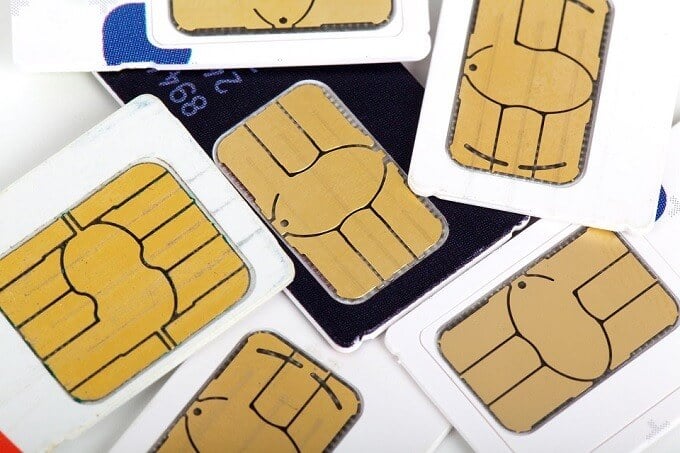
The other selection is to switch SIM cards. Of course, if you just went out and bought a new SIM menu, it would have a unlike phone number associated with it! Each service provider may have a different procedure to move your telephone number from 1 SIM to another.
In full general however, it should only take a phone call and verification of your identity. If the provider has physical stores, yous should even have the option of going in for a new SIM, with your old one disabled.
These days it's popular to use text messages sent to specific SIM cards as a course of two-factor authentication. And then now nosotros have something known as SIM-swap fraud. Where criminals find means to have your phone number transferred to a SIM they control. SIM duplication is another method. It's certainly something to watch out for.
Life After SIM Cards
SIM cards, at to the lowest degree detached SIM cards, aren't really necessary anymore. We are already seeing the rise of the eSIM or embedded SIM card. This is a SIM card built direct into the phone. This card is programmable, which means you tin can easily modify providers or apply multiple providers at once.
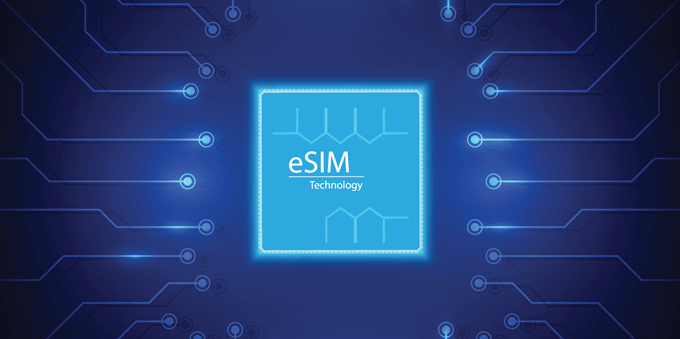
In some countries, "dual-SIM" phones take been very pop. With these you could accept ii telephone numbers, one for personal use, for instance. You could also take a dedicated data SIM card, perhaps with better rates.
eSIMs make this redundant and turns admission and authentication into something similar to fixed-line broadband usage. Where you but enter a username and countersign to admission a given service provider.
Few electric current phones have embedded SIM cards at the fourth dimension of writing, just that's prepare to modify as the industry adopts this new standard. You next telephone might very well have no identify to put a SIM menu at all, which would exist the finish of an era, but certainly a move for the better.
Do not share my Personal Information.
Which Carriers Use Sim Cards,
Source: https://www.online-tech-tips.com/smartphones/what-is-a-sim-card-used-for/
Posted by: maurinjoyesugly.blogspot.com


0 Response to "Which Carriers Use Sim Cards"
Post a Comment